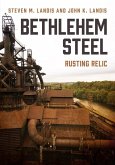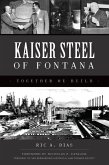Journey through the complicated economic and environmental history of the steel industry in The Mon.Perfect for fans of the history of American industrialization. Pittsburgh's Monongahela Riveris named after the Lenape Indianword Menaonkihela, meaning where banks cave and erode. The name is fitting: for over a century, these riverbanks were lined with steel plants and railroads that have now caved and erodedaway. By the 1880s, Carnegie Steelwas the world's largest manufacturer of iron, steel rails, and coke. However, in the 1970s, cheap foreign steel flooded the market. Following the 1981-1982 recession, the plants laid off 153,000 workers. The year 1985 saw the beginning of demolition; by 1990, seven of nine major steel plants had shut down.Duquesne, Homestead, Jones & Laughlin , and Eliza Furnaceare gone; only the Edgar Thomsonplant remains as a producer of steel. The industry could be said to have built and nearly destroyed the region both economically and environmentally. While these steel plants are lost today, the legacy of their workers is not forgotten.
Bitte wählen Sie Ihr Anliegen aus.
Rechnungen
Retourenschein anfordern
Bestellstatus
Storno





